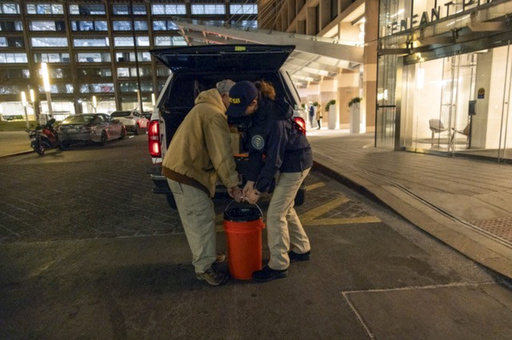
One of the key pieces of evidence in the aftermath of a plane crash is the so-called “black box.”
In fact, there are two critical devices commonly referred to as black boxes: the cockpit voice recorder and the flight data recorder, both of which are typically bright orange for easier location in wreckage. On Friday, federal investigators successfully retrieved the black boxes from a passenger aircraft that tragically went down in the Potomac River near Washington on Wednesday. Meanwhile, searches continue for similar devices from a military helicopter involved in the incident.
The flight data recorder that was recovered appears to be in good condition, and efforts to download its data are expected to commence soon. However, the cockpit voice recorder was compromised by water intrusion, which will complicate the data extraction process. This horrific crash has been marked as the deadliest in U.S. aviation history since the terrorist attacks of 2001, claiming 67 lives.
To clarify, black boxes play a vital role for investigators trying to piece together the circumstances surrounding a plane accident. These devices are engineered to be incredibly durable and are often located in the tail section of the aircraft, renowned as the safest area during a crash, as noted by the National Transportation Safety Board (NTSB).
They are equipped with special beacons that activate upon submersion in water, allowing them to transmit signals from remarkable ocean depths of up to 14,000 feet (4,267 meters). Although the battery that powers these beacons may last only about a month, the data records can remain intact for an indefinite period. For instance, the black boxes from an Air France flight that crashed in the Atlantic in 2009 were retrieved two years later from over 10,000 feet underwater, allowing technicians to recover much of the relevant information.
When a black box is found underwater, it is first washed in fresh water to eliminate corrosive salt before undergoing a meticulous drying process using vacuum ovens that can take hours or even days to prevent damage to the memory chips. Following this, the electronic components and memory segments are examined, with necessary repairs conducted, and chips studied beneath microscopes for quality assurance.
The cockpit voice recorder captures audio inputs such as pilot conversations and engine sounds, which are instrumental for investigators in analyzing aircraft operations during the accident. The NTSB emphasizes that any engine anomalies, alarms, or warnings can help reconstruct the flight’s final moments. Moreover, transcripts of the recordings can take weeks to produce, meticulously detailing discussions between pilots and crew as well as communications with air traffic control.
Conversely, the flight data recorder tracks numerous parameters such as altitude, airspeed, and direction, with some devices capable of monitoring over 1,000 characteristics including engine performance and cockpit alerts. This wealth of data allows the NTSB to generate computer-generated reconstructions of previosu flights. Interestingly, the flight data recorder can hold up to 25 hours of flight information, including prior journeys, which can be relevant when investigating mechanical anomalies in subsequent flights. The initial data review is generally completed within a day, but comprehensive analysis can extend for weeks.
The origins of these robust recording devices trace back to contributions from multiple individuals. French aviation engineer François Hussenot recorded the crucial parameters of flight in the 1930s using photographic film. Later, in the 1950s, Australian scientist David Warren conceptualized the cockpit voice recorder during his inquiry into the 1953 crash of the Comet, the world’s first commercial jet airliner. Following Warren’s development of a prototype in 1956, the significance of these devices was slowly recognized, leading to their widespread installation on commercial flights. Tragically, Warren’s motivation was deeply personal, as his father perished in a plane crash in Australia in 1934.
As for the term “black box,” it may derive from the early apparatuses created by Hussenot, which utilized dense film encased in a lightproof container. Despite their name, these devices were intentionally designed in vivid orange to facilitate location during recovery. Various theories exist regarding the name’s origins; some suggest it may relate to the devices becoming charred in accidents, while a more pragmatic explanation hints at its use in the electronic circuitry field post-war. Despite its ambiguous terminology, the term persists in popular media, as it encapsulates a sense of mystery surrounding aviation disasters.

